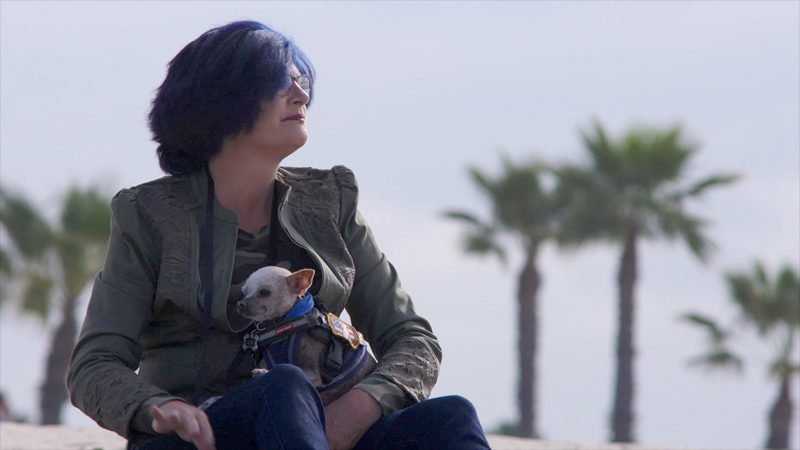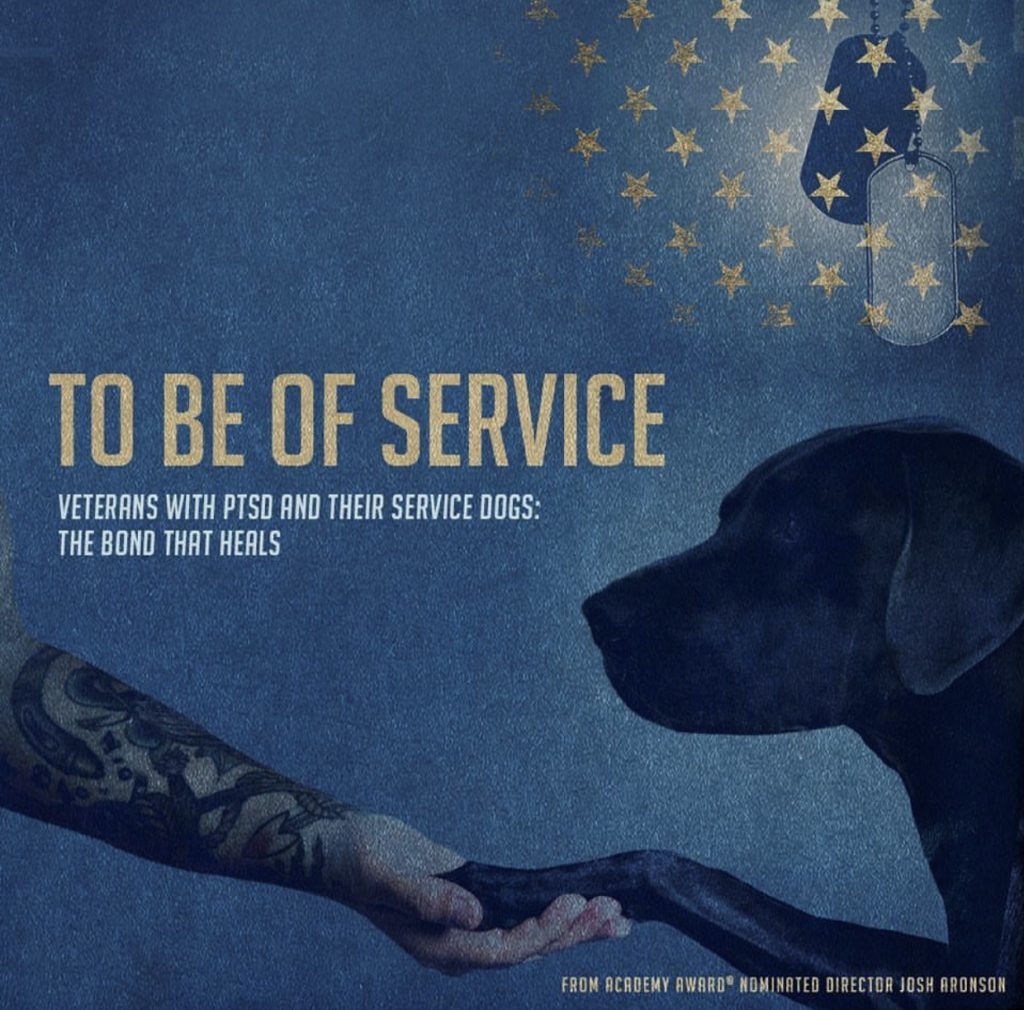Academy Award-nominated director Josh Aronson’s new documentary, To Be of Service, follows the stories of veterans who are paired with service dogs functioning as trained companions to help them regain their lives post-combat. It debuts today on Netflix for Veteran’s Day. In this op-ed, the filmmaker discusses what he’s learned about trauma and alternative forms of healing via the project.
Trauma visits all of us at some time in our life. Whether one has been affected by losing a loved one to a catastrophic accident, surviving an assault or enduring years of abuse, bullying or chronic illness, it’s nearly impossible to escape trauma’s clutches. Not everyone has the words to express their emotions or the ability to find a perfect resolution to their symptoms. But navigating the journey to healing is something we all can relate to. It is our shared experience.
In my documentary, To Be of Service, I was inspired to tell the stories of veterans with post-traumatic stress disorder (PTSD) who risked their lives to protect and serve, only to return home shattered by the horrors of war. Many of these women and men are unable to re-acclimate to society. For thousands of years, from the early Greeks to the Native American nations of our own land, warriors were given rites of return, the rituals of healing, and they were welcomed, honored and celebrated for their service. It’s all too clear that our government has abandoned this sacred charge and that negligence is haunting us. We say “never forget,” yet, still, few Americans honor and help integrate our brave warriors back to civilian life.
As the opioid crisis has become a national emergency, it’s evident we cannot rely on medication to heal from trauma. At best, it is a Band-Aid. At worst, it can become another serious and sometimes life-threatening obstacle to overcome. It seems, then, that we need to invest in gentler modes of healing without potentially dangerous side effects.

Onagh Hopke and her service dog, Loki, in “To Be of Service” (Josh Aronson)
In response to alarming increases in rates of substance abuse and suicide attempts by veterans, the film focuses on veterans bonding with highly trained service dogs who help them find a way back to independence, self-worth and love. Almost miraculously, through the unconditional love and personalized support of canine companions, they are able to return to their lives and family connections in a way that is uplifting and deeply moving.
In the film, we meet Brandon Lewis and his wife, Latisha, who live in Lubbock, Texas, and were both Marines — the source of their greatest pride. Brandon sustained a traumatic brain injury (TBI) in Iraq, and he has PTSD. He had been a shut-in, suffering migraines, panic attacks and hypervigilance. Brandon says that his service dog, Boothe, paired with him by Paws4Vets, has made him more open, more connected to the world and to himself. “Maybe Boothe just knows that something’s not right, and sometimes I don’t even know that something’s not right, but Boothe knows,” he says. A leader in the Marines, he now strives to be a leader in his life for other veterans with PTSD, and in his job at Allstate Insurance, with Boothe by his side.
Another veteran profiled in the film, Greg Kolodziejczyk, was born in Poland and came to the U.S. at 14. Five days after 9/11 he joined the Army, determined to be a credit to his adopted country. He did an extended tour in Iraq, became an Army Ranger, and, according to his mother, the happy young man she knew never returned. In spite of treatment and medication from the V.A., he attempted suicide, leaving him in a coma for 19 days. He survived, but his despair deepened. When told of the service dog program, ECAD, Greg grabbed on to it like a life raft. He fell in love instantly with his service dog, Valor, and they share their life together in New York. Greg is still struggling, but now he’s not alone. He has a battle buddy who makes him laugh and forces him out of the house every day for exercise.

(Aronson Films / First Run Features)
Born and raised in Los Angeles, Onagh Hopke, who appears at the end of the documentary, is a decorated Air Force veteran, retired IT professional, a blogger and an author, who joined the U.S. Air Force in 1987. Hopke has suffered from PTSD, military personal trauma and stage 4 aggressive endometriosis, which spread to her brain. “Some people have a wheelchair, some people have a cane, some people have crutches. I have a dog,” she says. Her beloved dog, Loki, was trained and certified as a service animal and they have been together 24/7 since, bringing her immense relief.
What do these inspiring stories about veterans and their service dogs mean for the rest of us — a sexual assault survivor, someone battling an invisible illness or tormented by a traumatic incident? While not everyone suffering from trauma can or should have a service dog, having tools to learn how to heal is a universal need. Witnessing how effective the human-dog bond can be has strengthened my conviction for a greater focus on alternative modes of recovery to heal from trauma.
This Veteran’s Day, I hope we will all take a moment to honor our veterans who keep us safe and protected and think of how we can support them as they return home from war. Researching resources, volunteering at a local organization or writing to your congressperson to support legislation demanding the VA pay for service dogs for veterans with PTSD, which it currently does not do.
Being of service can even be something as simple as downloading a powerful song. For the next year, proceeds from every download of “Unbroken,” Jon Bon Jovi’s original song for my film, will benefit the Patriotic Service Dog Foundation.
What I wish for all of us is to see how closely we are connected to one another and how we can lift each other up. Our arms are meant to hold one another. Our hearts are meant to love our friends and family, our neighbors and our country. We recover from trauma by supporting one another’s journey. We are, finally, a connected community of human beings on this earth.
Learn more at tobeofservice.com.
Advertising disclosure: We may receive compensation for some of the links in our stories. Thank you for supporting LA Weekly and our advertisers.

